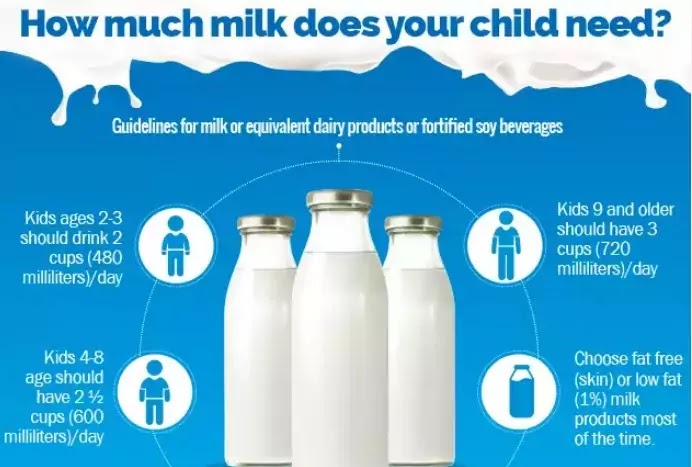If you are a parent, you are familiar with the struggle of making your fussy child gulp down a glass of milk loaded with taste enhancers; sneak in healthy vegetables in dishes and push them to eat fruits; blackmail them into eating another serving of rice or an added chapati. The struggle doesn’t end there. You have to ensure they have enough water in a day to keep their bowel movements strong. With so much on the plate (literally!) it’s possible for mothers to miss out on a lot of healthy ingredients that should ideally be a part of their kids’ diet. Here we decode your little one’s dietary needs…
What goes wrong?
The brain reaches full development stage by the age of five. From the age of five, the child’s physical growth starts for which proper blood circulation and iron supplements are necessary.
“Parents nowadays go easy on their children’s diets. The normal diet of children comprises processed foods like biscuits, sandwiches noodles (both refined and fried), candies, and chocolates. Excess of refined foods and trans-fats in children’s diet harms their physical development at an early age. Children do not get proper vitamins and important nutritional constituents. This is also the reason there is an increase in cases of gastrointestinal problems and other gut-related issues. Children report lower count of D3 (for Bones), B3 (neuralgia), B12 (Muscles) and iron.”
Start with a healthy breakfast
Kids these days are always on the move, right from sports training to schools and their day ends with tuition classes and training for extracurricular activities. This type of schedule definitely can drain any kid out of their energy.
Essential nutrients for your kids: Dos and don’ts
A child should eat four full meals in a day. The diet should essentially comprise of fresh fruit juices, probiotic curds and vegetables in the form of juices and purees. This should be supplemented with chapatis and parathas. Emphasis should be placed on everyday consumption of sprouts and beans whose nutritional strength and immunization enhancing power has been endorsed and recommended by the World Health Organization (WHO).
Here are the essential nutrients for your kids:
Grains: Grains are an essential part of a healthy diet, that offers nutrients and energy for a child’s normal growth and development. You must include a wide variety of whole grains and/or high fiber varieties of pieces of bread, cereals, rice, pasta, noodles, and oats.
Fruits and Vegetables: They are rich in colored pigments, water, vitamins, and minerals and are also good sources of fiber, sans high calories. A child should consume 5 portions of fruits and vegetables every day.
Fats and oils: They are an essential part of your kid or teen’s diet as they play an important role in the development of your kid’s brain, helping them in reaching their maximum growth potential. Fat is used in our body as fuel and helps the body absorb the fat-soluble vitamin A, D, E and K. Fatty foods are often associated with overweight, obesity, heart disease, and stroke but eating the right fats can provide the body with health benefits. Get your oils from fish, nuts, avocados, and liquid oil such as corn oil, soybean oil, olive oil, and canola oil.
Milk and dairy products: They are an excellent source of Vitamin A, D, B1, B2, and B12 and minerals particularly calcium. This is especially important for children and adolescents. A good bone balance can be achieved during childhood and teenage years if borrowing from the bones is minimized and daily calcium needs are met.
How much milk does your child need?
Does your kid suffer from ‘Hidden Hunger’?
Ever heard of hidden hunger? Your child may be suffering from it. “Sometimes foods may appear to be adequately nutritious and may be thought to provide sufficient carbohydrates, fats, and protein, but they may, in fact, be lacking in certain micronutrients. What we may presume is a food rich in nutrients may not be so. A diet, which may apparently seem nutritious enough may sometimes lack in important micronutrients. Children fed on these diets may therefore actually have deficiencies of vital micronutrients, and may therefore be ‘hungry’ in a certain sense. Not being apparent, this hunger is referred to as Hidden Hunger.” The most alarming bit is that this keeps children from achieving their physical and mental potential.
Diet during illness
Never starve the child during illness. Feed them energy-rich cereal-pulse diets with milk and mashed vegetables. Feed small quantities at frequent intervals. Give plenty of fluids during illness. Use oral rehydration solution to prevent dehydration during diarrhoeal episodes.
Here is a sample meal plan by NICK Lead Nutritionist, Truweight for growing children between the age of 5 – 12 years.
Waking up: A glass of warm low fat milk
Breakfast: Vegetable egg omelet with onion, tomato, spinach, whole grain bread slices, one apple
Mid Morning: Fruit salad with strawberry flavored low-fat yoghurt
Lunch: Lean chicken- capsicum-onion -zucchini stir fry - whole grain roll, mango lassi
Evening: Spinach- mushroom-peas cutlet, a handful of almonds, fresh mixed fruit juice (Apple Guava, lime)
Dinner: Whole multigrain phulkas, dal, paneer-peas-mushroom mixed vegetable curry.
Bed time: A glass of warm low fat milk
Caution: Nick feels that one can do away with wheat completely from a kid’s diet. “It contains gluten which makes intestines sticky and hard to pass food through them. Many kids are today diagnosed of being gluten intolerant and it’s better to remove wheat from the diet.”









0 Comments
Please do not enter any spam link in the comment box.